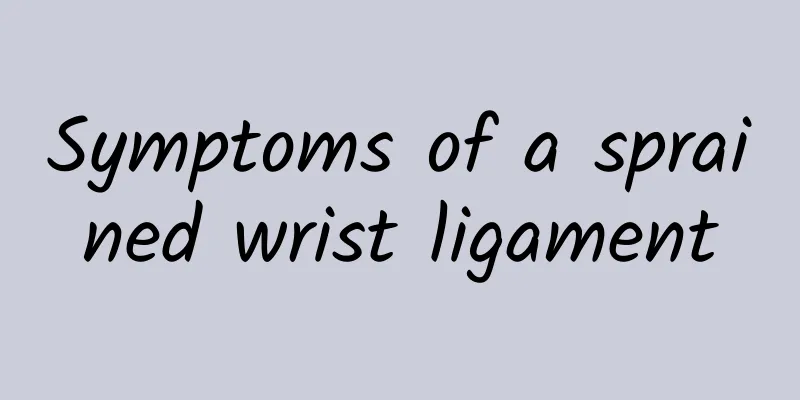Normal values of heart rate and respiration in children

|
A mother's greatness lies in her selfless and meticulous care for her children. They pay attention to every aspect of their children's food, clothing, housing and transportation, and their children's health is especially their focus. If you want to know whether a child is developing healthily, you naturally have to first rule out whether the child has any organ disease, so heart rate and breathing are the key points. What are the normal heart rate and breathing values for children? What are the causes of abnormal heart rate and breathing in children? Common symptoms of arrhythmia in children Clinically, arrhythmias are divided into two categories: rapid and slow arrhythmias according to the speed of the heart rate when the arrhythmia occurs. The former is seen in premature beats, tachycardia, atrial fibrillation and ventricular fibrillation, etc.; the latter is common in sinus slow arrhythmia and various conduction blocks. Arrhythmia refers to any abnormality in the origin of cardiac impulses, heart rate and rhythm, and impulse conduction. It can be caused by various temperamental cardiovascular diseases, drug poisoning, electrolyte and acid-base imbalance and other factors. Some arrhythmias can also be caused by autonomic nervous system dysfunction. What are the common symptoms of arrhythmia in children? Common symptoms of cardiac arrhythmia in children: 1. Sinus arrhythmia. Heart rate changes with breathing. Heart rate increases during inhalation, which is more obvious during deep inhalation, and slows down at the end of inhalation. The arrhythmia disappears after fever, exercise, emotional stress, crying, or use of atropine. Common symptoms of arrhythmia in children 2. Sinus tachycardia. The normal heart rate of children varies with age. If the heart rate of a newborn exceeds 200 beats/minute; exceeds 160 beats/minute under 1 year old; exceeds 140 beats/minute between 1-2 years old; exceeds 130 beats/minute between 2-6 years old; exceeds 120 beats/minute between 7-12 years old, it is called sinus tachycardia. It is common in exercise, tension, crying, fever, anemia, bleeding, shock, myocarditis, heart failure, etc. Other factors such as hyperthyroidism and the influence of certain drugs such as atropine and ephedrine can also cause it. Common symptoms of arrhythmia in children: 3. Sick sinus syndrome. It is a disorder of excitement generation and conduction caused by failure of the heart's sinoatrial node function. In children, it can be caused by myocarditis, cardiomyopathy, digitalis poisoning, and congenital heart disease. The clinical characteristics are persistent and significant sinus bradycardia, and the heart rate does not increase with exercise, crying, or fever. In addition to bradycardia, paroxysmal supraventricular tachycardia may also occur, so it is also called bradycardia-tachycardia syndrome, or "fast-slow syndrome" for short. What is the normal heart rate for children? Normal heart rate range for children: The normal values of heart rate and respiration for children of different ages are as follows: Newborn's breathing: 40-50 times/min Pulse: 120-140 times/min Under 1 year old Respiration: 30-40 times/min Pulse: 110-130 times/min 2-3 years old Respiration: 25-30 times/min Pulse: 100-120 times/min 4-7 years old Respiration: 20-25 times/min Pulse: 80-100 times/min 8-12 years old Respiration: 18-20 times/min Pulse: 70-90 times/min Children's heart rate is faster, which is mainly related to their vigorous metabolism and high sympathetic nerve excitability. Children aged 8-14 have a heart rate of 70-90 beats per minute. Children's pulse rate is unstable and is easily affected by various internal and external factors, such as eating, activity, crying, fever, etc. Therefore, children's pulse should be measured when they are at rest. If the pulse increases significantly and does not slow down during sleep, organic heart disease should be suspected. Tips: "Sinus arrhythmia" is a normal physiological phenomenon, not a disease. "Sinus arrhythmia" is most common in children and adolescents, but it is also not uncommon in adults. |
<<: Can pregnant women eat hamburgers during confinement?
>>: Can pregnant women eat Kewpie salad dressing?
Recommend
Increased blood uric acid
As we all know, uric acid is one of the waste pro...
What is gynecological viral infection?
Gynecological problems are one of the most common...
What to eat for liver detoxification
The liver is the most important metabolic organ i...
Can black wolfberry and astragalus be eaten together?
Wild black wolfberry and scutellaria baicalensis ...
Traditional Chinese medicine prescription for delaying menopause
We all know that every woman will experience meno...
Why does drinking tea cause diarrhea?
Summer has arrived, so many people will get angry...
What to do if you are allergic to aloe vera
I believe everyone knows aloe vera. Aloe vera is ...
How to treat right medial malleolus fracture
Some women who usually walk in high heels may eas...
Sequelae of diffuse axonal injury
In many cases, if a person's body suffers som...
Is myocardial ischemia serious in young people?
In life, some people do not understand myocardial...
Symptoms of cervical aneurysm
Cervical artery aneurysms are also quite common i...
Will kidney stones cause back pain? Is this treatment effective?
Experts say that kidney stones can cause low back...
What causes saliva to smell?
Saliva is the saliva in the human mouth, and ther...
What is the reason for the bulging bags under my eyes?
The human body is a very sophisticated instrument...
The difference between Panax notoginseng and Panax notoginseng
Panax notoginseng has another name called Panax n...









